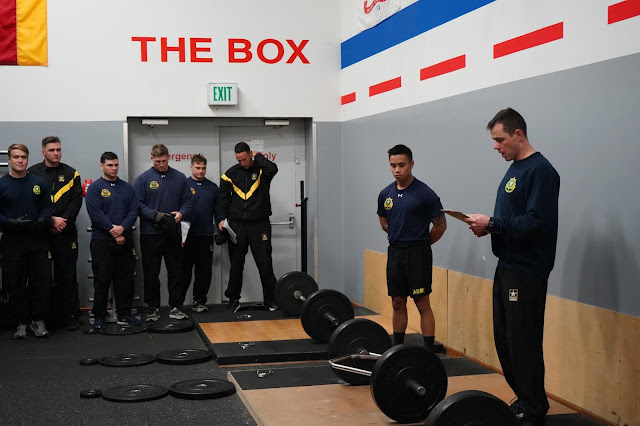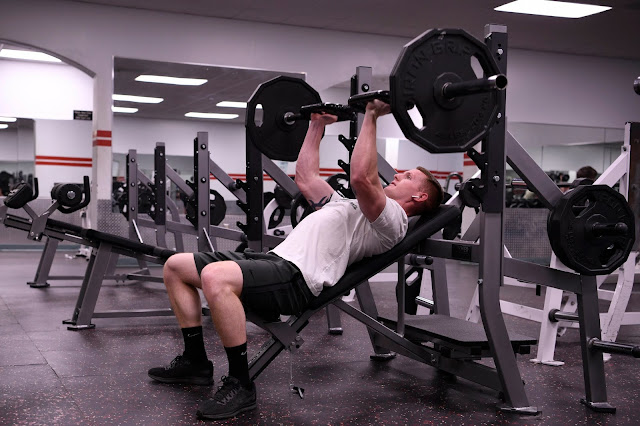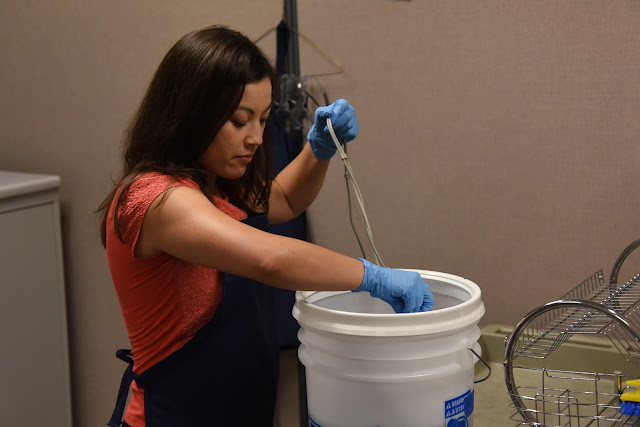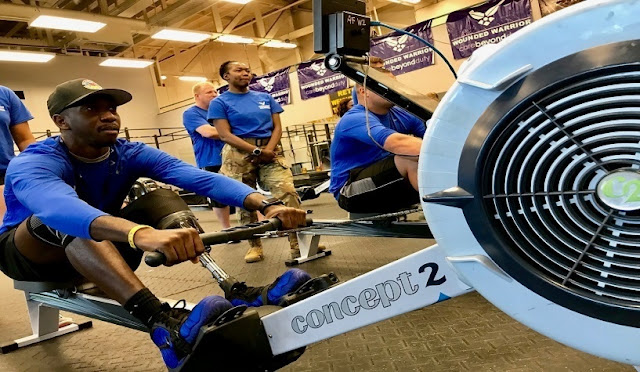Army Fit: 2CR prepares for the new ACFT
Story by Sgt. LaShic Patterson
2d Cavalry Regiment
VILSECK, Germany – Training under January’s motto of readiness, Soldiers from the 3rd Squadron, 2d Cavalry Regiment conducted a two-day leader professional development training to cover the Army Combat Fitness Test in Vilseck, Germany, Jan. 16-17, 2019.
The purpose of the LPD was to ensure that leaders have an understanding of the ACFT, have performed the ACFT and have the opportunity to provide feedback on how to improve its future implementations.
“The S3 [training and operations] shop is going to walk us through all of the events; we’ll learn all [of] the standards, try all of the events and make sure you meet the standard,” said Lt. Col. Andrew Gallo, commander of the 3/2CR.
“Obviously, some of you may be doing some of these exercises for the first time. The intent is beyond tomorrow, to the extent we can, that we start training our formations on this test so that we can lean forward, and this can be done simply by adding some of these things to the end of your PT [physical training] sessions.”
The ACFT is slated to replace the Army Physical Fitness Test as the measure of physical fitness of Soldiers beginning in October 2020 and includes six events: the three-repetition maximum deadlift, the standing power throw, the hand release pushup, the sprint, drag, carry, the leg tuck and the two-mile run.
The goals of the ACFT are to improve Soldier and unit readiness, to transform the Army’s fitness culture, to reduce preventable injuries and attrition and to enhance mental toughness and stamina.
“With the old APFT, it only measured muscular endurance,” said Staff Sgt. Jered Casuga, squad leader and master fitness instructor of the 3/2CR.
“With this new ACFT, it measures the whole, overall wellness and fitness of the actual Soldier. You have to work out all parts of fitness; that includes your strength, your power, muscular endurance, [and] cardio.”
One of the major changes to the ACFT is the age and gender-neutral scoring policy for each event. Since standards in combat do not discriminate between age and gender, the ACFT reflects that reality according to the ACFT website.
“I think a lot of people were asking for that,” said Staff Sgt. Joshua Peach, infantryman and platoon sergeant of Iron Troop, 3/2CR.
“If we are all rated on the same scale, then, equality is better across the board. It’s just better for everybody in the end. Everybody is at least going to be on an even playing field. You know at minimum what everybody is able to handle, and you should be able to manage in that situation.”
1st Lt. Nickole Kaple, executive officer for the Forward Support Troop, 3/2CR, also weighed in on the matter.
“I am a big supporter of the gender neutrality of the ACFT,” said Kaple.
“The physical demands of any given mission or task are not altered due to the sex of the Soldier completing it. Therefore, I agree that the Army’s fitness test should not be altered due to sex. The ACFT is a long-awaited opportunity to hold everyone to the same high standards and to eliminate negative perceptions about the physical capabilities of women.”
With age and gender no longer as testing markers, scoring for the ACFT events will be tiered by heavy (black), significant (grey) and moderate (gold) physical demands. Although changes to the policy are still underway, Soldiers will likely follow the same requirements with the current APFT policy for the ACFT, taking the test twice per year.
It is important to note that the U.S. Army based the ACFT on the Baseline Soldier Physical Readiness Requirements and Physical Demands Study, looking to existing tests for ideas such as the Marine Corps’ Physical Fitness Test and Combat Fitness Test, the Air Force Tactical Air Control Party Operators Test and physical performance assessments from other sports programs, government agencies and allied nations’ militaries.
“If you go the ACFT website, it talks to you about the reason why they’re doing that event; telling you [for example], you’re trying to help the Soldier over a wall or pushing a Humvee away from something for recovery.” said Peach, elaborating on how each ACFT event compares to common warfighting tasks.
“It is helpful to know that someone can stabilize your weight as you’re trying to be lifted up on a wall, whether it be a compound wall, a wall in the leader’s reaction course or an obstacle course.”
Peach, Kaple and other participants in the ACFT two-day training were able to assess just where their strengths and weaknesses existed within each event.
“I think the most challenging event for the ACFT is the sprint portion of the event,” said Peach about the sprint, drag, carry event. This event consists of five 50-meter shuttles, starting with a sprint, a backward drag of a 90-pound sled, the laterals, a loaded carry with a 40-pound kettle bell in each hand and a final sprint to conclude the event.
Peach also stated that he plans to work on explosive movements needed in the standing power throw event where the key is to throw the ball past the arch of your shoulders and not straight up.
“It was an eye-opening experience to show that maybe you’re not as prepared for events as you think you are,” Peach continued. “Exhaustion builds up in your muscles; the muscle fatigue is a build up from beginning to the end. By the end, you’re feeling it all accumulated.”
For Kaple, the most challenging event was the leg tuck after experiencing muscle fatigue from the hand release pushup and sprint, drag, carry events.
“I plan on working on my upper body strength to increase my performance on the leg tuck,” said Kaple. “I also need to dedicate time to cardio after other workouts so that I can practice running after reaching muscle failure.”
Casuga, who attended the Master Fitness course in August 2018, suggested using dumbbells and kettle bells to prepare for events such as the 3RM deadlift and having basic knowledge of anatomy and physiology as beginning steps for Soldiers who look to prepare for the ACFT.
“I’m pretty glad that there is a new physical fitness plan for the Army,” said Casuga. “Because at this point, it’s really hard to train someone with just pushups and situps when what we need to practice on is carrying Soldiers off the battlefield.”




Comments
Post a Comment